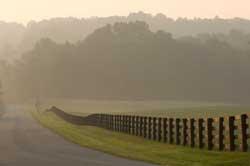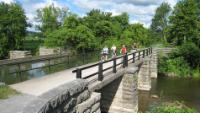To provide observations and information on the emerging fields of landscape scale conservation, heritage preservation, and sustainable community development.
Newsletter
Stay up-to-date with the latest nature, culture and community news.
We won’t spam you or share your information. Newsletters are sent approximately 10 times a year. Unsubscribe at any time.

The National Heritage Areas Act: Now is the Time
The first National Heritage Area was designated in 1984 and today there 55 areas showcasing the nation’s rich cultural and natural resources. But while evaluations and lived experience show the success of the idea, official acknowledgement of NHAs as part of the park service family has not been achieved despite years of advocacy. Read here why now is the time to recognize NHAs as a legislatively authorized component part of the National Park Service.

Stories That Captured Your Attention
In 2020, it often seemed as if each day held a year’s worth of headlines. As a result, stories that might have merited front page coverage in the recent past managed to escape significant media and public scrutiny. Our most popular post of 2020, “While We Were Not Watching,” tried to capture some of these missing narratives, especially as they related to the protection (or lack thereof) of large landscapes. More hopeful writings on the potential for large landscape conservation to aid in economic revitalization or contribute to the practice of interpretation and storytelling, also garnered attention over the past year.
The Next Four Years: Trends in Landscape Scale Conservation
The conservation community is awash with lists of what the new administration needs to do to reduce if not reverse the damage of the last

Featured Voice Interview: Ta Enos, Founder and CEO of the PA Wilds Center for Entrepreneurship
This month, we had the privilege to interview Ta Enos, Founder and CEO of the PA Wilds Center for Entrepreneurship. The Center is the the coordinating nonprofit for the PA Wilds Conservation Landscape effort, an innovative initiative that promotes economic development, recreation, conservation, and stewardship on a landscape scale.

Landscape Scale Community and Economic Development
Creating and implementing programs to jump start community and economic development is never easy. However, there are many benefits of doing so at a landscape scale. The opportunity for regional promotions, sharing capacity building initiatives, and assembling a critical mass of attractions are just a few. What are some successful examples of this work and what might the future hold?

The National Heritage Areas Act: Now is the Time
The first National Heritage Area was designated in 1984 and today there 55 areas showcasing the nation’s rich cultural and natural resources. But while evaluations and lived experience show the success of the idea, official acknowledgement of NHAs as part of the park service family has not been achieved despite years of advocacy. Read here why now is the time to recognize NHAs as a legislatively authorized component part of the National Park Service.

Stories That Captured Your Attention
In 2020, it often seemed as if each day held a year’s worth of headlines. As a result, stories that might have merited front page coverage in the recent past managed to escape significant media and public scrutiny. Our most popular post of 2020, “While We Were Not Watching,” tried to capture some of these missing narratives, especially as they related to the protection (or lack thereof) of large landscapes. More hopeful writings on the potential for large landscape conservation to aid in economic revitalization or contribute to the practice of interpretation and storytelling, also garnered attention over the past year.
The Next Four Years: Trends in Landscape Scale Conservation
The conservation community is awash with lists of what the new administration needs to do to reduce if not reverse the damage of the last

Featured Voice Interview: Ta Enos, Founder and CEO of the PA Wilds Center for Entrepreneurship
This month, we had the privilege to interview Ta Enos, Founder and CEO of the PA Wilds Center for Entrepreneurship. The Center is the the coordinating nonprofit for the PA Wilds Conservation Landscape effort, an innovative initiative that promotes economic development, recreation, conservation, and stewardship on a landscape scale.

Landscape Scale Community and Economic Development
Creating and implementing programs to jump start community and economic development is never easy. However, there are many benefits of doing so at a landscape scale. The opportunity for regional promotions, sharing capacity building initiatives, and assembling a critical mass of attractions are just a few. What are some successful examples of this work and what might the future hold?


